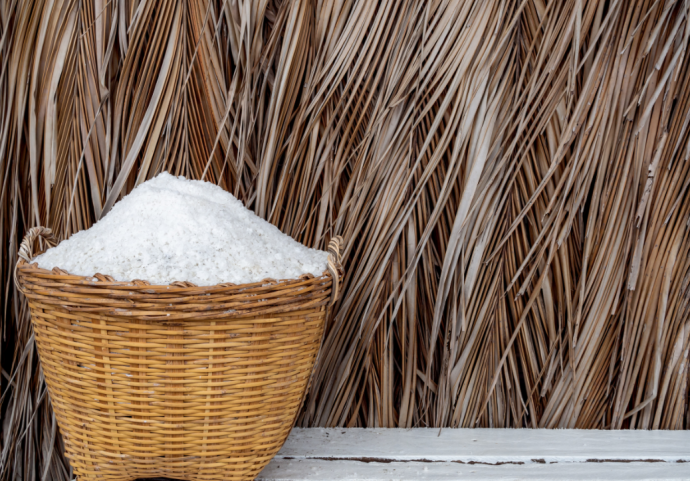Tools

Using the proper tool for the weeding job is important. Tap roots do not come out easily with a shallow digging tool, so using a hori hori knife or a dandelion puller for weeds with taproots make sense. Weeds that grow in the gaps around brick pavers or flagstones can be dug out with a narrow, pointy tool such as a crack weeder or claw weeder.
Vinegar

Fill a spray bottle with 3 parts white vinegar to 1 part natural castile soap, and gently mix them. Spray on weeds in a narrow stream. This will kill the top of the plants, but might not get a long taproot permanently. For a more potent vinegar solution that kills weeds to the bottom of the root, use a horticultural-grade vinegar, which is much stronger.
Salt

Salt is best used in an area where you do not want other plants to grow again, such as along a flagstone path, in between sidewalk cracks, or on your driveway. Before an expected rain, pour generic table salt onto the weeds. As soon as the weeds are moistened with a bit of rainwater, the salt will soak down into the soil, killing the weedy plants.
Boiling water

For a 100-percent natural, safe, and inexpensive solution, try boiling water, which kills weed seeds and plants immediately. Very slowly and carefully pour boiling water over weeds and weed seeds. Proceed slowly so you don’t burn yourself.
Mulching

Mulch is a covering that blocks weed seeds from sunlight so they don’t germinate, inhibits growth underneath itself, and retains moisture. Also, mulch provides needed nutrients as it decomposes over time, and moderates soil temperatures.
Cover the soil between your plants and along rows with mulch to prevent weeds from growing.
Keep the mulch a few inches from the base of your plants to discourage insect invasions and prevent rot, too.
Common organic mulches include wheat straw, shredded leaves, and wood chips; inorganic mulches include black plastic and landscaping fabric. Layer organic mulches on the ground about 2 inches thick. For persistent or numerous weeds, try covering the area with dampened newspaper (black ink only) and then cover with 2 inches of mulch. Around the bases of trees and shrubs, consider covering the ground with landscape fabric and then an organic mulch.
Solarizing

Solarizing your soil involves covering an area of weedy ground with a clear, heavy plastic sheet. This only works in full sun and warm weather where the heat will collect under the sheet and literally cook your weeds. Leave the sheet in place for 4 to 6 weeks, and remove only once all the weeds are brown and dry. For more effectiveness, till the soil to bring weed seeds to the surface, and let them sprout just before solarizing.
Keep your garden edges trimmed

Ever noticed many weeds collect at the edges of your yard or garden? Keep the edges mowed; this will help prevent a weed invasion.
However, many lawn mowers aren’t able to do a good job of getting to the weeds along the edges of your lawn, around posts and fence lines, and close to planting beds.
To get to those weeds more easily, consider a trimmer, especially if you have medium to heavy rugged weeds that have grown in.








